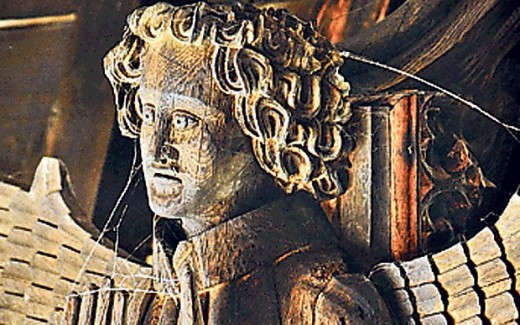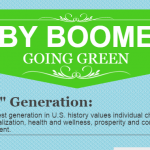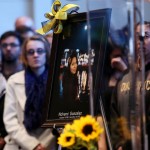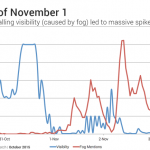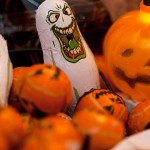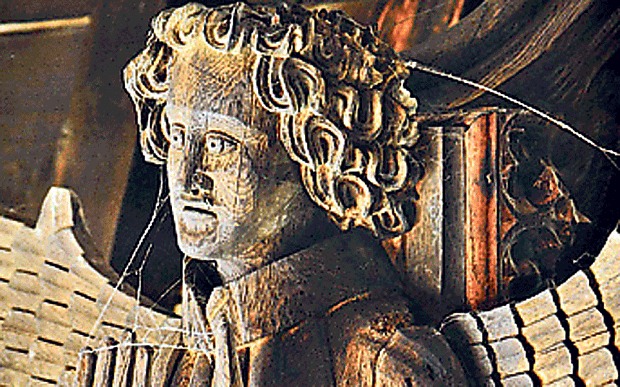English bushes roofs where a bunch of angels roost
Winged angels carved on the beams of church buildings are an extraordinarily English artwork. Nowhere has more than East Anglia

folks that like angels – and so they’re popular at the moment – have had a rolling feast of the creatures this week, with the Guardian Angels venerated (October 03, 2015) and a separate red letter day previous in the week – Michaelmas. Michaelmas isn’t about daisies. It honours St Michael, no man however the prince of the heavenly host of angels.
I celebrated by devouring The Angel Roofs of East Anglia via Michael Rimmer (Lutterworth, £19.95), playing the striking colour images. The guide’s subtitle is Unseen Masterpieces of the middle a long time, which may sound odd, since the carved angels have been on convey for 600 years. but is rather correct, considering the fact that they are largely to this point above ground stage and badly lit that simplest a telephoto digital digital camera can capture the proper details.
people who use Twitter may recognize Michael Rimmer’s Angel Roofs account that due to the fact that 2012 has shown the progress of his work recording the riches of East Anglian timber church roofs aflutter with angels. It’s a chiefly English glory, and of the one hundred seventy or so angel roofs that continue to exist, about a hundred and twenty are in East Anglia.
unlike saints’ statues and stained glass, destroyed widely within the Reformation, many angelic pieces of carving live on, partly as they have been so arduous to get at. This gave sympathetic parishes an excuse to disregard the orders of iconoclast commissioners, most famously the deranged William Dowsing, who in 1644 visited 250 church buildings in Suffolk and Cambridgeshire leaving journal entries similar to this: “Southwold April 6, 1644 We brake down 150 superstitious footage; St Andrew; and four crosses on the four corners of the vestry; and gave orders to take down 13 cherubims; and to take down 20 angels.”
In his personal terms he used to be proper. Mr Rimmer notes that within the early Reformation, angels, “whose photography had been ornamental relatively than devotional”, were less focused than saints’ pictures.
but when William Dowsing can have seen them as their makers meant, he’d were the entire more livid together with his saws and grappling irons. For, as Mr Rimmer factors out, the angels are most frequently richly painted within the bays of the nave nearest the rood-loft and altar. It used to be to the altar that angelic dialog used to be directed. photograph after picture of those beautiful carvings presentations the angels preserving musical units – a shawm, a tabor, a lute – or else the units of the passion, which is to claim, the objects related to the redemption of mankind by means of the struggling and death of Jesus on the pass. So a tragic angel in St Nicholas, King’s Lynn, clutches three nails and a hammer, every other at Methwold, Suffolk, holds a crown of thorns, with some sharp spines still in position in the fixing holes made through the wood worker within the first quarter of the fifteenth century.
The angels are depicted accordingly because the donors who paid for them and the artists who carved and (which was once more expensive) painted them believed that the Mass celebrated on the altar of the parish church was the same sacrifice as that on Calvary, and its being made existing in the liturgy used to be one thing that all of the angels of heaven took part in day by day.
Mr Rimmer takes the angels carved on the hammer-beams of Westminster corridor in London because the earliest example, in about 1395, adopted soon with the aid of affluent churches in all places East Anglia. one of the first, before 1410, was St Nicholas, King’s Lynn, with its miraculous tie-beam roof where angels roost, bathed in gentle. it’s cared for by way of the churches Conservation trust, to which Mr Rimmer has donated his royalties. That will have to make the angels smile upon him.
Telegraph Columnists: daily opinion, editorials and columns from our celebrity writers
(79)

